Features | DigivibeMX Version 10
Multi-language Support
DigivibeMX® 10 supports more languages. Now it’s available in 4 languages: English, Spanish, Turkish, French and Chinese*.
This new feature allows to download new Language Packages or Update current ones.
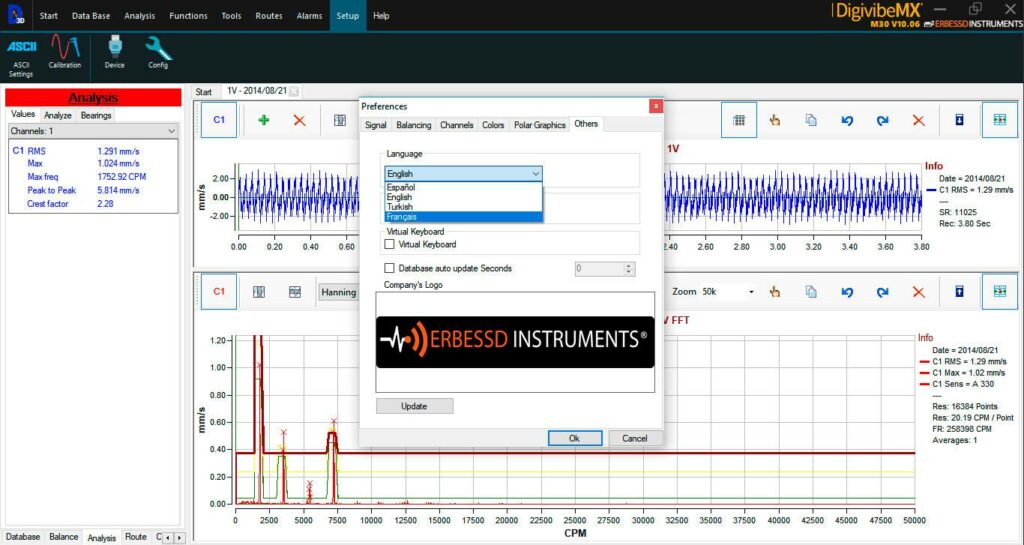
SBS Balancing Mode
Easy-to-use function designed to perform balancings on the field as well as on balancing machines. The system uses a tracking filter to identify the RPM in a specified range so small changes on the speed don’t affect the balancing process. Balancing speed range: 100 – 120,000 RPM in a very intuitive interface.
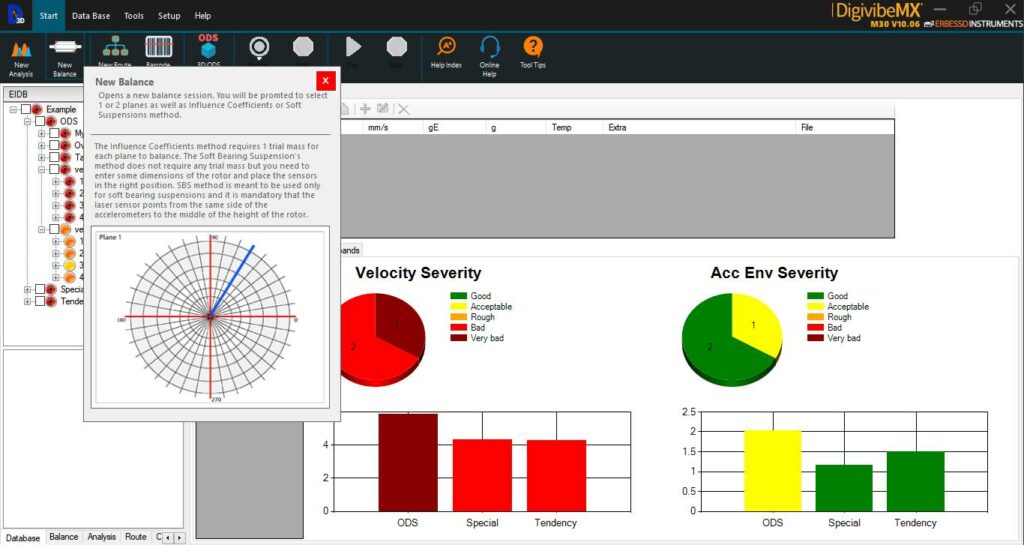
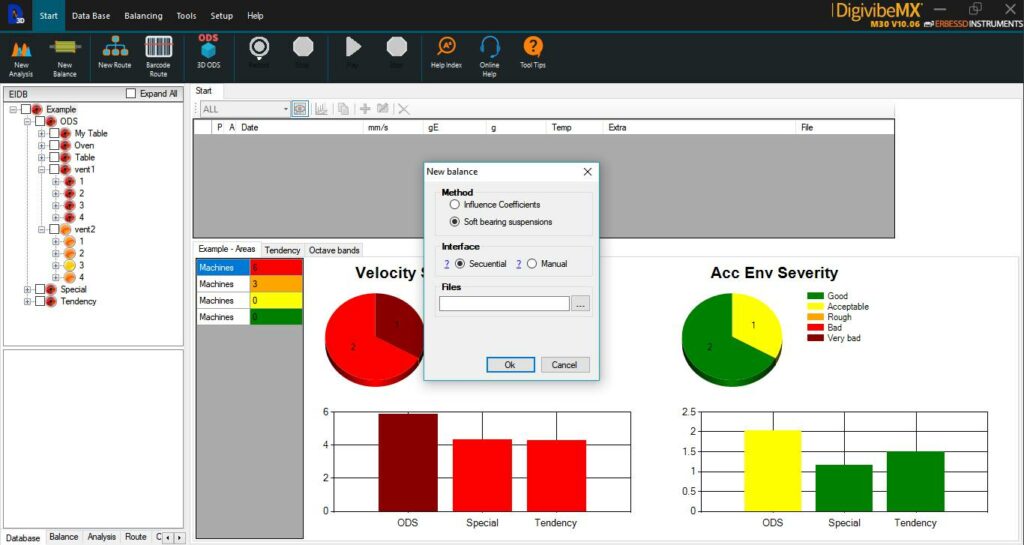
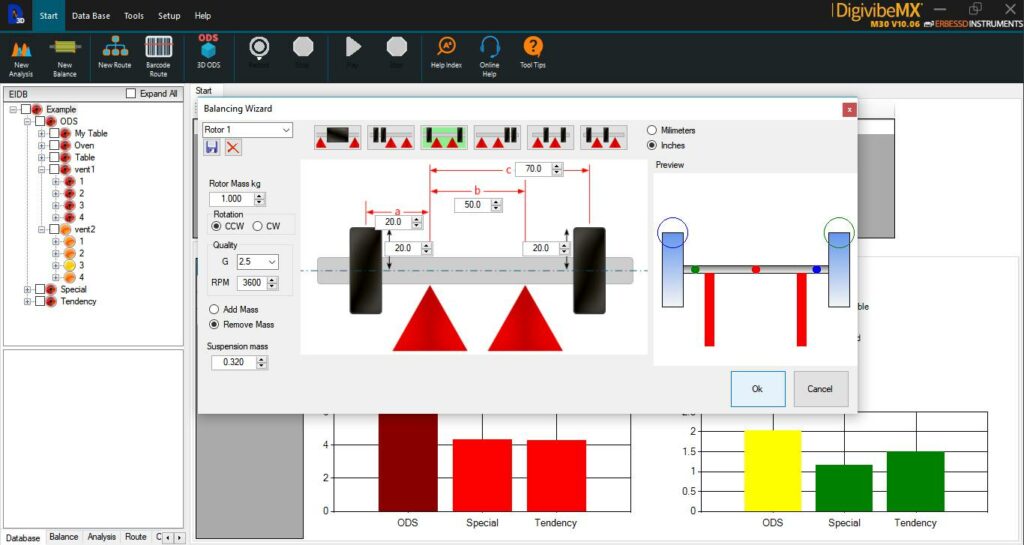
Automated Channel Switching*
The new DigivibeMX 10 makes even easily the process of Balancing in 2 planes. Now it’s possible to make a secuential switching between channels 1-A and 1-B avoiding an incorrect measure of each plane.
There are two modes to implement this feature:
- Secuencial Switching (automatic): Make a new balance, set up the record time and will start a new recording in Plane 1; at the end of the recording the software automatically switches the channel on the interface and start recording Plane 2.
- Manual Switching: You can switch between Channel 1-A and 1-B (on Interface) by clicking over the polar graphic corresponding to Plane 1 and Plane 2 respectively (in DigivibeMX). When recording, the software will acquire the signal on that Plane.
*This feature is only available with the Interface I-600
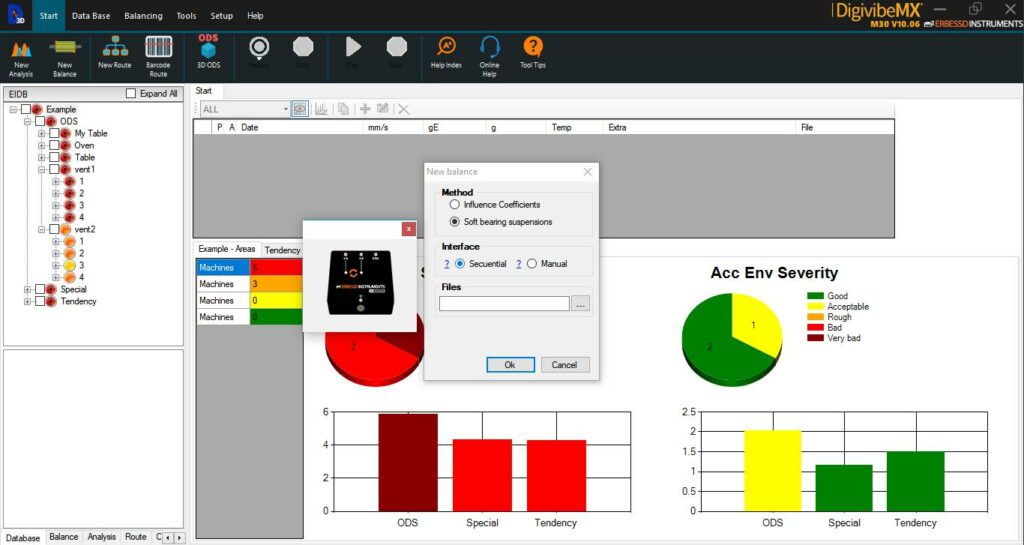
Polar graphics are visual representations of the balancing vector positions. They are useful for locating the correction masses.
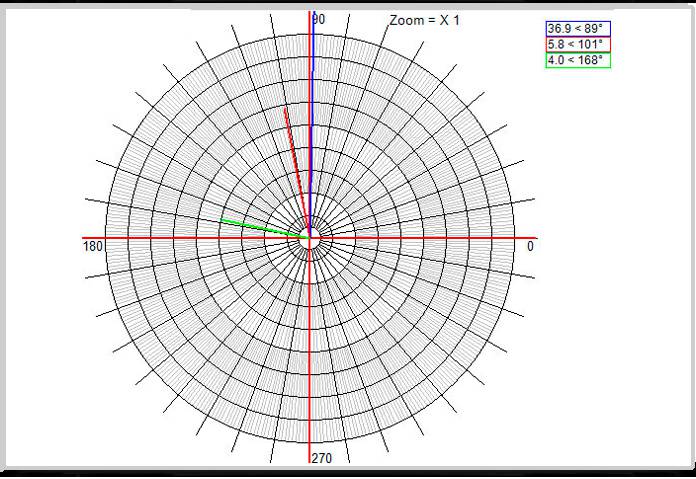
DigivibeMX M10 has many balancing tools, including:
- Single plane balancing calculator
- 2 plane balancing calculator
- Serial balancing
- Residual unbalance
- Balancing quality grade calculator
- Split weights
- Combine weights
- Drill depth
- Plate size
- Trial mass calculator
- Radius change
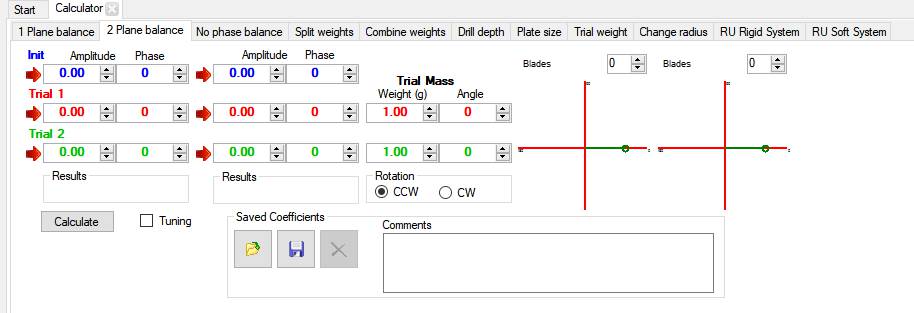
DigivibeMX M10 is able to generate automatic balancing reports on Microsoft Word*, so it is very easy to edit them. It includes:
- Values for each run are set in a table
- Evolution trend of the balancing process in RMS and filtered values
- FFT cascade for each plane
- Time domain signals in a cascade format for each plane
- Polar graphs
- Final Spectrum







